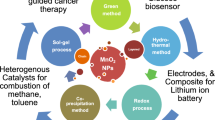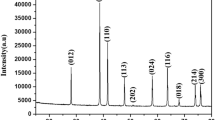Abstract
The bio-limited forming technology, a new technology organically integrating microbiology, manufacturing science and materials science, is used in the manufacturing of magnetic or conductive microstructures of different standard shapes. This paper explores the feasibility of magnetizing microorganism with thermal decomposition method. The principle of thermal decomposition of iron pentacarbonyl has been adopted to investigate the cells of Spirulina (a type of nature micro-helical microorganism) coated with pure iron. Further analysis have been conducted on the observations results of hollow micro-helical magnetic particles form, components and the phase structure obtained by using various tools including optical microscopy, scanning electron microscopy (SEM), energy dispersive X-ray detector (EDX), transmission electron microscopy (TEM), and X-ray diffraction analysis (XRD). Results showed that Spirulina cells could be coated with iron particles after the completion of thermal decomposition process, with well-kept shape of natural helixes and consistent components of different sampling points on the surface layer and thickness of layer. After the heat treatment at 700°C, the type of the surface iron layer formed was α-Fe. The paper also investigates the kinetics of the cell magnetization technology by thermal decomposition.
Similar content being viewed by others
References
Li X F, Li Y Q, Cai J, et al. Metallization of bacteria cells. Sci China Ser E-Tech Sci, 2003, 46(2): 161–167
Cai J, Li Y Q, Li X F, et al. Research on magnetic metallization of bacterial cells. Chin Sci Bull, 2003, 48(2): 210–214
Chen B, Zhan T Z, Lian Z Y, et al. Magnetization of microorganism cells by sol-gel method. Sci China Ser E-Tech Sci, 2008, 51(5): 591–597
Chen B, Cai J, Lian Z Y, et al. A Study on machining quality of a kind of functional hollow lightweight metallic micro-helixes by bio-limited forming. Mater Sci Forum, 2006, 532-533: 317–320
Deng L J, Zhou P H, Weng X L. Status and advance in the research on magnetic electromagnetic-wave absorbent. J Funct Mater, 2005, 2(4) (z1): 8–10
Guo X F, Wang C Z, Wu S X. Development and prospect of absorbing materials. Gansu Metall, 2010, 32(4): 47–52
Li X C, Gong R Z, He H H, et al. Microwave magnetic properties and microstructure controlled of carbonyl FexNi100−x fibers. Rare Metal Mater Eng, 2007, 36(z30): 222–224
Kim J C, Lee J W, Park B Y, et al. Characteristics of Fe/SiO2 nanocomposite powders by the chemical vapor condensation process. J Alloys Compd, 2008, 449(1–2): 258–260
Xia N B, Xin X, Si Y K, et al. Improvement on microwave absorption property of tetrapod-shaped ZnO whiskers. Mater Appl EMC, 2009, 1: 57–59
Author information
Authors and Affiliations
Corresponding author
Rights and permissions
About this article
Cite this article
Zhang, D., Zhang, W. & Cai, J. Magnetization of microorganism cells by thermal decomposition method. Sci. China Technol. Sci. 54, 1275–1280 (2011). https://doi.org/10.1007/s11431-011-4338-8
Received:
Accepted:
Published:
Issue Date:
DOI: https://doi.org/10.1007/s11431-011-4338-8




